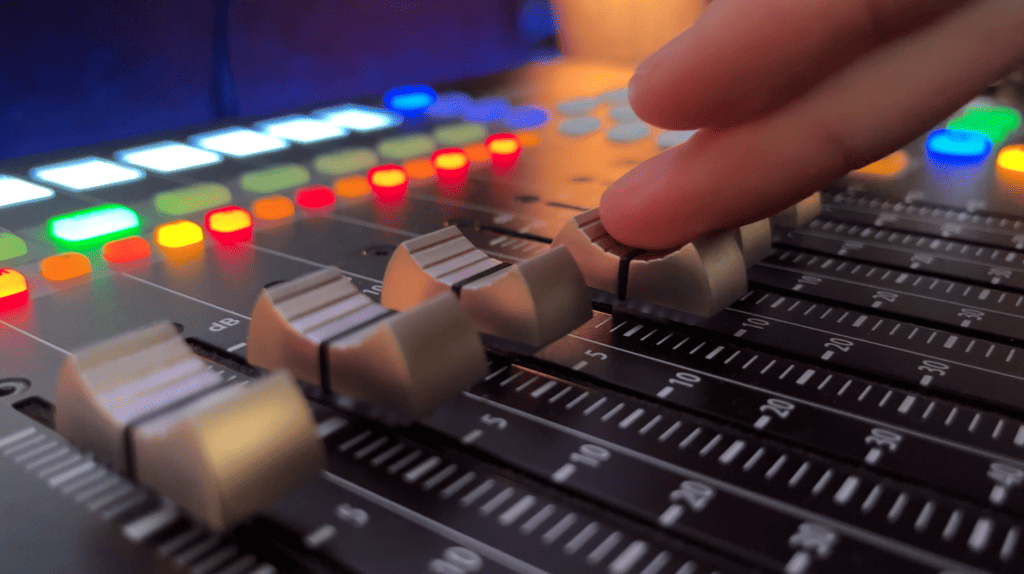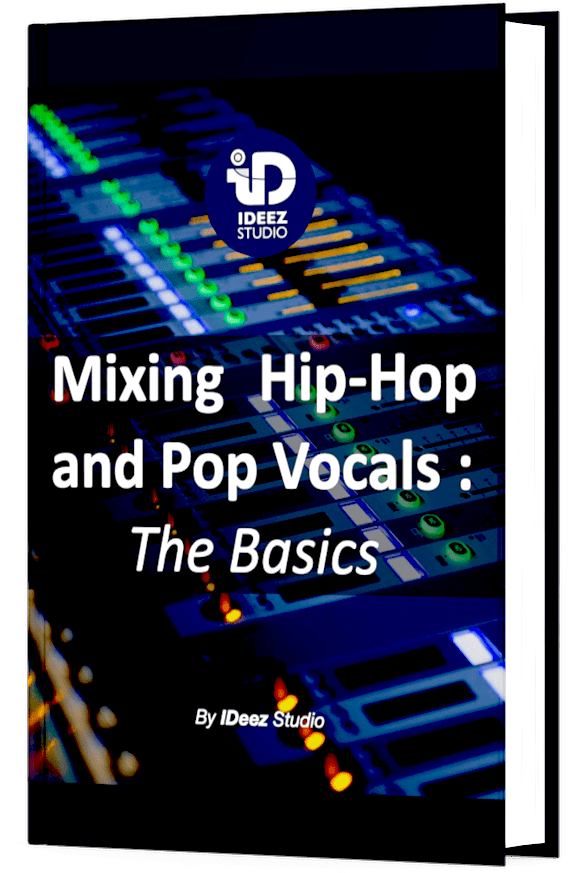What is the goal of mixing, anyway? Is it just to make a track sound good? But then, what even counts as “good”? A punchy, clear low-end? Hi-fi, in-your-face vocals? A smooth blend and balance of all the elements, so much so that you can hear every single nuance? The truth is, it’s easy to get caught chasing vague ideas of what mixing should accomplish. Maybe now is the perfect moment to shift how you think about mixing altogether.

In life, setting goals is just what we do. Athletes aim to beat personal bests, chefs strive for the perfect soufflé, and gamers work tirelessly to unlock the next achievement. When you’ve got specific goals, it’s a whole lot easier to know if you’re on track. Without those defined targets, though, things get messy.
Mixing is no different. The more clear and specific your mixing goals are, the better you can steer every EQ, fader, and effect move toward achieving that one thing you’re aiming for. In this article, we’re going to break down what the actual goals of mixing music are, and why mixing matters so much in bringing your music to life.
Looking for a professional sound engineer specializing in pop and hip-hop music ? You’re in the right place! Mixing, mastering, production, editing,… we’ve got it all covered!
Let’s start now!
Having Goals In Your Mixing
“Getting a good mix.” Sounds nice, right? But what does that actually mean? Whose idea of a good mix are we aiming for here? A mastering engineer’s? Your bandmate’s? The bass player who keeps asking for “more low-end, bro”?
Without clear targets, it’s hard to know when you’ve even hit the mark. And when it comes down to it, everyone has their own version of what a good mix should sound like. What works for a pop producer may not cut it for someone mixing black metal. So, if everyone’s standard is different, how can you possibly call a mix “done”?

That’s where setting more specific, actionable goals comes in. Instead of chasing the ever-elusive idea of “good,” you can aim for things you can actually measure. Things like:
- Removing the bad – Getting rid of mud, harshness, or unnecessary noise that would otherwise be present in an amateur mix.
- Balancing the elements – Making sure instruments complement, not fight, each other.
- Creating cohesion – Giving everything a sense of belonging within the same sonic space.
- Creating a vibe – Setting the emotional tone.
- Making it interesting – Adding dynamics, effects, or ear candy to keep listeners engaged.
By focusing on these kinds of tangible goals, you’ll have a better idea of what to do and when the job’s done. So, let’s take a closer look at what each of these goals involves and how they’ll help you shape the mix you really want.

The 5 Goals of Mixing
1. Removal
In my eyes, a great recording, followed by proper mixing, is about showing your music in its best light. However, no matter how well a track is recorded, there’s always going to be some baggage that needs to go.
These distractions could be anything, like low-end rumble from a noisy air conditioner, harsh frequencies making the vocals grating, or some lingering low-end woofiness that’s clogging up the kick and bass.
When you get rid of that unnecessary noise and clutter, your mix becomes more emotionally engaging. It’s weird, but by simply removing the bad stuff, the good parts start to shine.

Suddenly, a vocal line becomes more heartfelt, and the drums feel like they weren’t recorded in your buddy’s spare room at his apartment. That’s a huge part of what mixing is all about, using EQ, compression, filters, and other tools to clean things up, smooth them out, and make the bad sound “good.”
Think of it like polishing a diamond.
You’re not necessarily changing what’s there, you’re just cutting away the rough edges to reveal what was always meant to stand out. And once the distractions are gone, your track becomes more moving and more impactful.

2. Balance
When it comes to mixing, there are a few things you need to keep in check to make everything work smoothly.
The first, and arguably the most important, is level balance. This entails setting the right volume for each track so every element sits comfortably in the mix. If the vocals are too low, nobody will hear the lyrics. If the kick drum is too loud, it’ll drown everything else out.
And no amount of EQ, compression, or effects will save you from a bad level balance. If the faders aren’t right, nothing will feel right. Start here, and the rest of the process becomes a whole lot easier.

Next up is frequency balance. Every instrument lives in a particular frequency range, and part of your job is to make sure things don’t feel overcrowded. If your bass guitar and kick drum are both rumbling around the same low-end space, they’ll end up fighting.
Similarly, if your vocals and guitars are present in the same midrange zone, your mix can start to feel harsh. Getting the frequency balance right ensures that everything has its place and nothing feels too busy.
The final piece of the puzzle is stereo balance. Imagine you’re watching a band on stage. The drummer is planted center stage, the guitar player is off to the left, the keys are on the right, and the singer stands right in the middle. That spatial separation helps the audience focus on what’s important without getting overwhelmed. Your mix works the same way. By panning instruments strategically across the stereo field, you create space and dimension.

3. Vibe
The “vibe” of a mix is the feel it creates. It’s the mood, the energy, and the emotional depth that the song delivers. The vibe you’re aiming for isn’t just a happy accident either. It’s influenced by the genre, the mood of the track, and what the artist wants the listener to experience.
A dark, brooding electronic track needs a totally different vibe than, say, an upbeat indie-pop anthem. The tools and techniques you use, like reverb, delays, saturation, and even the way you balance levels, all play a role in shaping that feeling.

Think about how Billie Eilish’s “Bad Guy” would hit differently if the vocals weren’t so upfront and intimate. That weird mix of space and dryness gives the track its identity. If any major part of that mix shifted, like the vocal was buried deep in reverb, it just wouldn’t feel the same. It’d be a completely different listening experience.
That’s why it’s crucial to listen to a wide variety of music and pay attention to how different genres are mixed. How does a jazz ballad’s smooth, airy vibe differ from the raw, aggressive energy of a punk track? What makes an R&B mix feel warm and laid-back compared to the heavy punch of a hip-hop track? When you start noticing these things, you’ll get a better sense of how to create the right vibe for your mixes.
4. Cohesion
When we mix with cohesion in mind, we mix to make everything feel like it belongs together. The idea here is that all the instruments, vocals, and effects are part of the same musical idea rather than a bunch of random sounds thrown into the same session.

It’s the difference between a track that sounds like a song and one that feels like a collection of individual parts competing for attention. When your mix has cohesion, you get a sense of unity that ties the whole experience together.
You don’t want to listen to a track where the drums sound like they were recorded in a stadium, but the guitar is so dry it feels like it’s being played in a closet. Without cohesion, the listener is yanked out of the experience—and nobody wants that.
Looking for a professional sound engineer specializing in pop and hip-hop music ? You’re in the right place! Mixing, mastering, production, editing,… we’ve got it all covered!
Let’s start now!
5. Interest
Interest can be a tricky thing to define in a mix. You know when a track feels interesting, but it’s not always easy to pinpoint exactly why. It’s that little something that makes a song captivating, keeps your ears perked, and makes you want to stick around for the full ride. And when it’s missing? Well… you definitely notice.
You can have a track where every instrument is perfectly balanced, the vibe is there, and everything sounds good. But the whole thing plays out without any changes, no builds, no drops, no shifts. Even a killer song can feel like it’s on autopilot if there’s nothing to keep the listener engaged.
Now imagine taking that same mix and adding a few moments of surprise. Maybe the drums drop out suddenly, or a delay tail sweeps the vocal into the next verse. Just like that, the song becomes way more compelling.
The longer a mix stays in the same scene, the quicker it risks becoming background noise. Humans love patterns, but we also love it when those patterns get disrupted. Adding interest keeps the listener on their toes.

Essential Tools We Use In Mixing
Mixing music means knowing how to use a handful of essential tools. Let’s break them down one by one.
EQ
EQ is the sculptor’s chisel of a mix. Every instrument lives in its own frequency range, and EQ lets you carve out space for each one.
If you have a muddy low-end, you can cut the frequencies clogging it up. If you need the vocals to pop, you can boost the mids where they shine. EQ makes sure everything has its own space so instruments don’t fight each other. Get this part right, and your mix will start to feel more open and clear.
Compression
Compression is how we control dynamics. We use it to keep things from getting too loud while bringing up the quieter parts. A well-tuned compressor can also help glue elements together and add consistency. The trick, however, is to use it carefully. Too much compression can suck the life out of a track and make it feel overcooked.
Panning
Panning is how you decide where each instrument sits in the stereo field. By spreading things out, you create space for every element and give the mix that sense of width and dimension that makes it feel alive. The trick is to find the right balance. Too much panning can make things feel disjointed, while not enough leaves your mix feeling one-dimensional.
Effects Processing
This is where things get really fun. Reverb, delay, chorus, saturation are the spices we use to make mixes sound more exciting. But like with any spice, a little often goes a long way.
Final Thoughts – Is Mixing Important?
The process of mixing music is nothing short of intriguing.
It’s where creativity meets precision, where art and science come together to shape a song into its final form. Even if you’ve spent hours (or let’s be honest, days) producing your track, mixing still plays a huge role in determining how it’s ultimately going to sound. It’s the step that brings everything together into a cohesive and polished whole.
A great mix can add emotional depth, character, groove, and vibe, subtly shaping the experience in ways listeners don’t even realize. Mixing is where you get to be both an artist and a technician. You move faders and fine-tune EQ and compression like a craftsman, but at the same time, you shape the song’s energy and flow like a storyteller. When you nail it, mixing becomes part of the magic that gives the track life.
So, is mixing important? Absolutely. It’s not just a step in the process. It’s where the music fully comes to life.
Related Articles:
My favorite tools for mixing pop and hip-hop music:
Plugins
In the field of auto-tune, I’m convinced that nothing’s better and more efficient than Antares Auto-Tune Pro. As for the EQ’s, FabFilter Pro-Q3 and Slate Digital Infinity EQ are, in my opinion, the best tools. For compression, I have 2 favorites plugins: Waves RComp and UAD EL8 Distressor.
As for reverb, I’m a big fan of the Soundtoys Little Plate, but generally, I go for the Valhalla VintageVerb for its versatility. I also love the Arturia Rev PLATE-140 and the UAD Pure Plate for its organic side.
Headphones
The closed headphones I love and will always love using for mixing pop and hip-hop music are the Beyerdynamic DT-770. As for the best open-back headphones, I use the Sennheiser HD600 headphones, and I’m really happy of them!
Monitors
Having a pair of Yamaha HS7 in its studio or home studio is always cool for more excitement while listening to your mixes. The Adam Audio T7V monitors are also super accurate. In my studio, I also have a pair of Genelec 8030 for their reliability.
Hardware gear
For anyone who wants to start using hardware in their mixes, I always recommend these 2 units from Klark Teknik: the EQP-KT and the 76-KT. Don’t forget to use good converters, such as the Apollo interfaces. This is essential for a good rendering.





